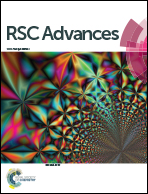Morphological and microstructural investigations of composite dielectrics for energy storage
Abstract
We investigated structural and dielectric properties of novel capacitors based on 0–3 composite dielectrics. For this purpose various BaTiO3/Ba(Ti,Ge)O3 nano scaled powders were synthesized via four different routes, namely via the sol–gel procedure, the oxalate method, the Pechini method and the mixed oxide method. As the best-suited method with respect to the formation of spherical and equally sized particles without agglomeration, a sol–gel synthesized powder was chosen for further experiments. The nanoparticles were coated with E glass (CaO, MgO, Al2O3, B2O3, SiO2), BBS glass (BaO, SiO2, B2O3) or an Al2O3/MgO mixture. The resulting composites were annealed, sintered and afterwards covered with electrodes to fabricate ceramic composite capacitors. To identify the system best suited for energy storage applications, different matrices and BaTiO3/matrix ratios were investigated. The morphology and the phase content were analyzed by electron microscopy and X-ray diffraction. An optimum grain size and distribution was obtained for a 15 wt% BBS glass mixed with a Ba(Ti,Ge)O3 powder. The mixture sintered at 925 °C resulted in the best composite dielectrics not only concerning the morphology but also the dielectric data. Additionally, the BBS matrix showed no tendency to form secondary phases, while preserving a homogenous distribution of matrix element components.


 Please wait while we load your content...
Please wait while we load your content...